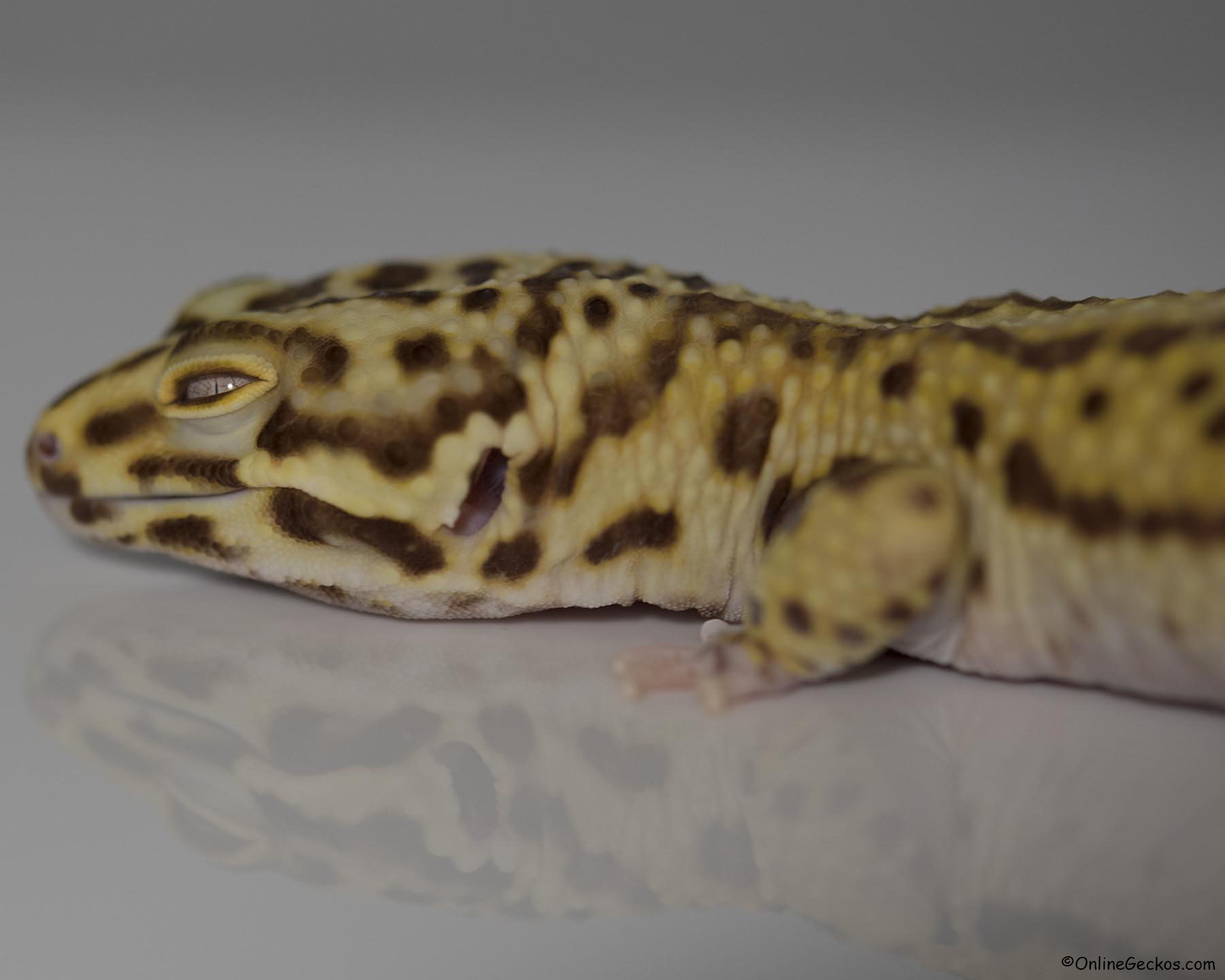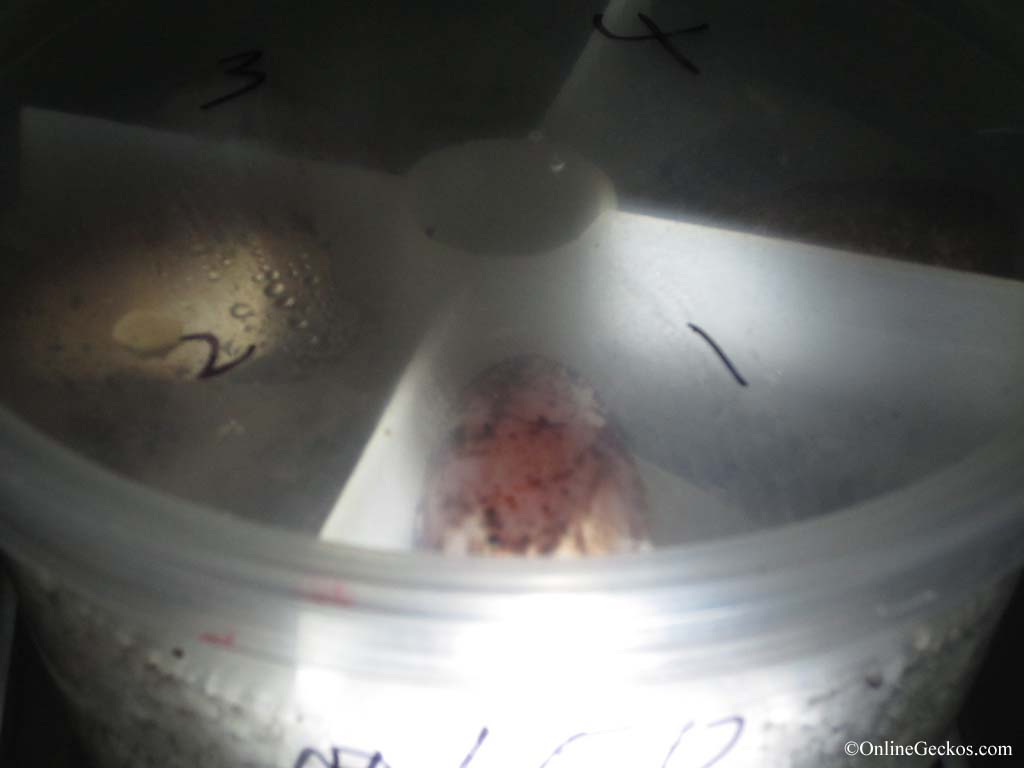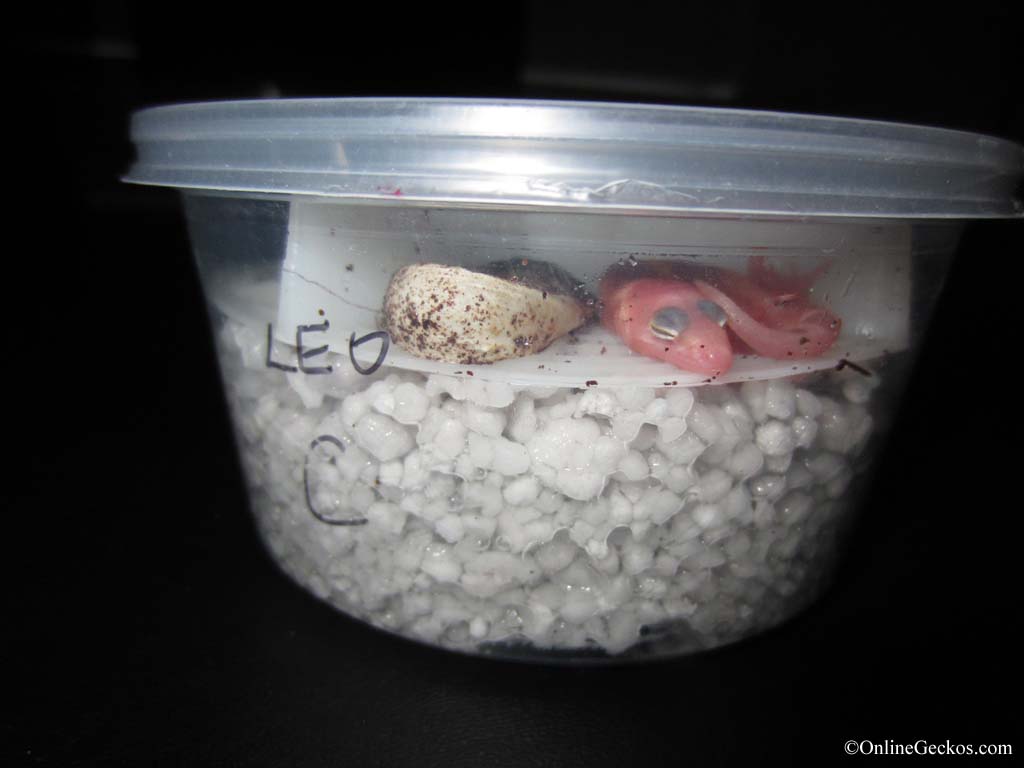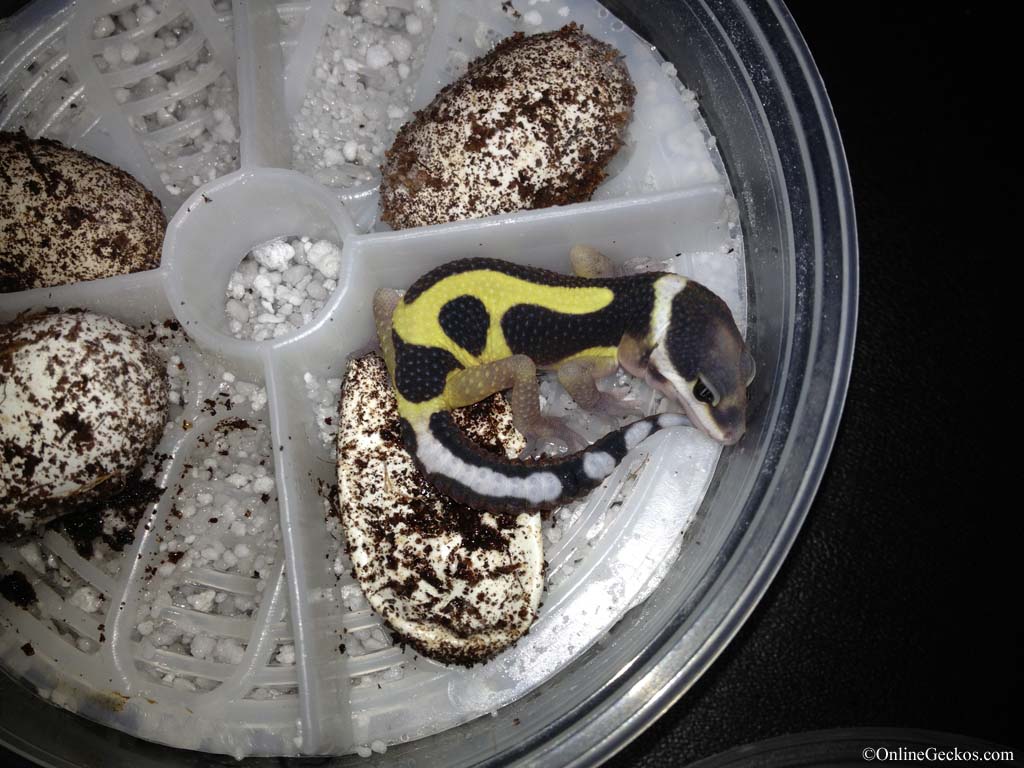How can you tell if the eggs you are incubating are fertile or not?
There’s a method called “leopard gecko egg candling”. It’s simply to shine a light on the egg to see if the egg gives off a pink/red color or not. A fertile egg will usually give off a pink, reddish look on the inside. It’s an indication that there’s something growing inside. Here’s an example from one of our eggs, this egg has been incubating for 30 days now.
This particular egg is being incubated for females at 81(F) degrees, so it has another 30 days to go yet. But you can see very distinctively the pink/reddish coloration on the inside. Continue reading “Leopard Gecko Egg Candling – How to check for a fertile egg”



